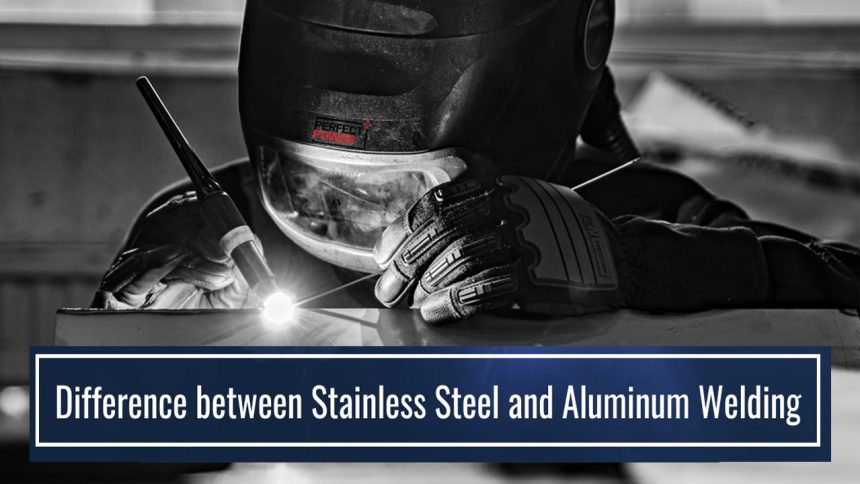The key to a successful conclusion is understanding the type of metal to use and their welding procedures. Stainless steel and aluminum welding differ significantly from one another. The first step in submitting an appropriate request for quote (RFQ) to a metal fabricator is to specify which raw materials you use.
Difference Between Stainless Steel and Aluminum Welding
021208.com
A ferrous metal, which contains iron, distinguishes stainless steel from aluminum on a fundamental level. As a non-ferrous metal, aluminum is devoid of iron. Other key features that vary across these materials include weight and material strength.
But when choosing which metal to utilize for your application, there are other factors to consider besides the chemical composition. Understanding the differences between welding stainless steel and aluminum and adhering to each material’s safe welding practices is essential.
STAINLESS STEEL VS. ALUMINUM: DURABILITY
Aluminum is undoubtedly weaker than stainless steel, but that added strength comes at a cost. Steel is unsuitable for various applications because it weighs almost three times as much as aluminum. Although lighter than stainless steel, aluminum is more prone to dents, warps, and scratches.
The susceptibility of a substance to corrosion is another factor. Because stainless steel is non-porous and includes chromium, which offers exceptional corrosion resistance, pollutants have a hard time penetrating the importance. Aluminum, on the other hand, has more pores than stainless steel. Aluminum may rust quickly when exposed to oxidation or acidic conditions, whereas stainless steel keeps its integrity.
It is noteworthy that stainless steel may be used at high temperatures without warping, but aluminum often becomes bendable when heated above 400 degrees. This is why it’s crucial to utilize several braces when welding aluminum. This is because it will aid the material’s ability to maintain its shape, which is essential when tight tolerances are required. On the other hand, aluminum keeps its strength when exposed to shallow temperatures, unlike stainless steel, which can become brittle.
Aluminum can still be utilized in critical applications even though stainless steel is often more robust than it. Both stainless steel and aluminum can be trusted building materials for metal manufacturing when adequately developed and manufactured.
STAINLESS STEEL VS. ALUMINUM: WELDING TECHNIQUES
No matter what metal you use for a particular application, you need a professional welder. While it’s true that aluminum is softer and simpler to cut, bend, and form, welding requires sophisticated skills due to its chemical composition and properties.
When welding, aluminum requires substantially higher heat inputs than steel because it conducts heat about five times more efficiently than stainless steel. Understanding the ideal welding temperature for aluminum is quite challenging, and choosing the suitable filler metal and shielding gas makes things more complicated.
On aluminum, improper welding temperatures can lead to weak seams from porosity-related cracking or a lack of penetration in the completed weld. Exams may reveal this porosity, which is usually not visible to the human eye. It takes time and effort to repair a weld, emphasizing how crucial it is to do it correctly the first time. Contrarily, stainless steel is simpler to weld since it has fewer variations and requires less heat input.
See here the difference between Stainless Steel and Aluminum Welding. Stainless steel and aluminum welding differ significantly from one another.
021208.com
STAINLESS STEEL VS. ALUMINUM: WELDING COST DIFFERENCES
Aluminum and stainless steel can also suffer supply chain disruptions and price volatility, as was the case during the epidemic. Despite this, aluminum typically costs less per pound than stainless steel and offers superior value for money due to its lower starting weight. Add extra aluminum material to achieve the strength needed for your welding project. Additionally, shipping aluminum products can be cheaper than shipping products made of steel because aluminum is lighter.
As previously indicated, aluminum welding calls for extensive training. As a result, welding aluminum will cost more, which can reduce the cost of stainless steel.
COMMON USES FOR ALUMINUM AND STAINLESS STEEL WELDING
Here are some specific industries where each material is utilized, taking the characteristics of aluminum and stainless steel into account. There are various advantages of stainless steel for fabrication projects. Be aware that depending on its function and application, you can employ either in some situations.
APPLICATION OF ALUMINUM IN METAL FABRICATION-
- Components and enclosures for naval ships
- Missile defense elements
- Packaging supplies
- Radar defense systems
- Aerospace (owing to its lightweight qualities) (due to its lightweight properties)
- Transportation of liquid natural gas and cryogenics (and other industries that operate at shallow temperatures)
APPLICATION OF STAINLESS STEEL IN METAL FABRICATION-
- Packaging supplies
- Components and enclosures for defense
- Municipal machinery (for its corrosion resistance)
- Equipment for Food Production (for its hygienic qualities and for being less reactive to foods; it won’t change color or flavor)
- Medical Supplies (operating tables, MRI machines, etc.)
- Energy Sector (pipes, valves, storage tanks, etc.)
- Construction (for aesthetically beautiful exteriors and interiors) (for aesthetically pleasing exteriors and interiors)
This information will help you understand the difference between stainless steel and aluminum welding.











